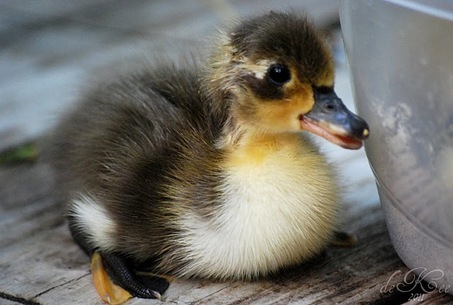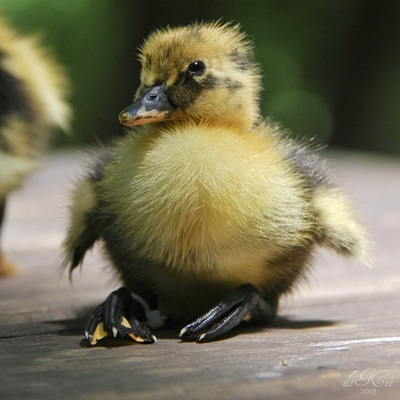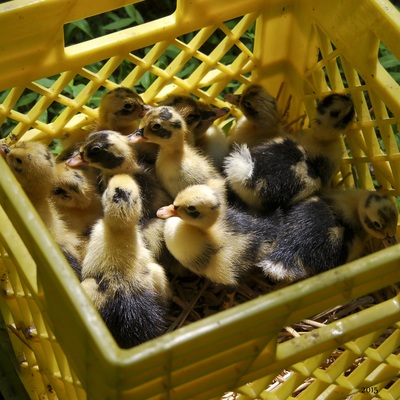All About Ancona Ducks

"Spot" my Blue Ancona girl
Unique and individually patterned with a friendly and calm temperament, Ancona are a wonderful dual purpose breed that will forage better and have superior laying ability to most other dual-purpose breeds. Ancona have large and very hardy legs and feet compared to lighter ducks, giving them improved foraging ability on rugged or heavily wooded property.
Developed in Great Britain during the early twentieth century, Ancona are thought to have originated from Runner ducks and Huttegen ducks, similarly to the Magpie, which is the Ancona closest relative. They average 6 to 7 pounds and are a bit stockier than the Magpie. Ancona range in colors with a pinto-style spotting pattern that’s unique to each individual duck. They come in black and white, blue and white, chocolate and white, lavender and white, silver and white, and multicolored. “Chocolate is a sex-linked recessive trait. If a chocolate drake mates with a black duck, all female offspring will be chocolate, while all male offspring will be black. A black drake mated to a chocolate duck produces all black offspring. Only male offspring will carry the sex-linked recessive chocolate gene.” (Holderread 1985, 4).
The Ancona is a happy and adaptable all-purpose quacker. If you leave their eggs in the nest they will go broody and are generally good mothers. They are excellent layers (even in winter), usually giving about 260 jumbo white or blue-green eggs yearly. The meat is very high quality, much more flavorful, and less fatty than your average Pekin duck and averaging about 4 lbs dressed weight at 16 weeks (my typically harvest age).
|
Carol Deppe notes that Ancona have lovely personalities; they have a laid-back and subtle social hierarchy - dominance really isn’t that important to them. They are very accepting of all flock mates, even the least dominant Ancona is a respected member of the flock, allowing her to be happy and full of self-esteem, which will keep her laying well. Mildly talkative, Ancona have very distinctive vocalizations and often make better watch-dogs than geese. They have various foraging calls along with softer chirps of numerous sounds for more private moments. |
Ancona have female leaders who controls the movements of the flock when they’re out foraging. This makes perfect sense because the females have far higher nutritional needs than the drakes. Being the foraging leader is a rather complex role, she may or may not be the dominant female and she won’t always be out in front. But, unlike most other duck breeds where the females follow the drake (who is far more concerned with breeding than foraging), the Ancona female leader makes the forage decisions. This means that by the time the other duck breeds head out on the hunt for bugs that the Ancona will have already gobbled up the juiciest goodies.
. |
Campbell’s become far more effective foragers when mixed with a flock of Ancona because the Campbell girls will gladly ignore their drakes to follow the Ancona ladies out for tasty snacks. Campbell ducks are bolder, though, than the prudently watchful Ancona. This is probably why so few Ancona fall prey to aerial predators compared to many other duck varieties.
Ancona are a rare breed, a breed designated as “critically endangered” by the American Livestock Breeds Conservancy (www.albcusa.org) and are in need of more conservation breeders.
Ancona are a rare breed, a breed designated as “critically endangered” by the American Livestock Breeds Conservancy (www.albcusa.org) and are in need of more conservation breeders.












